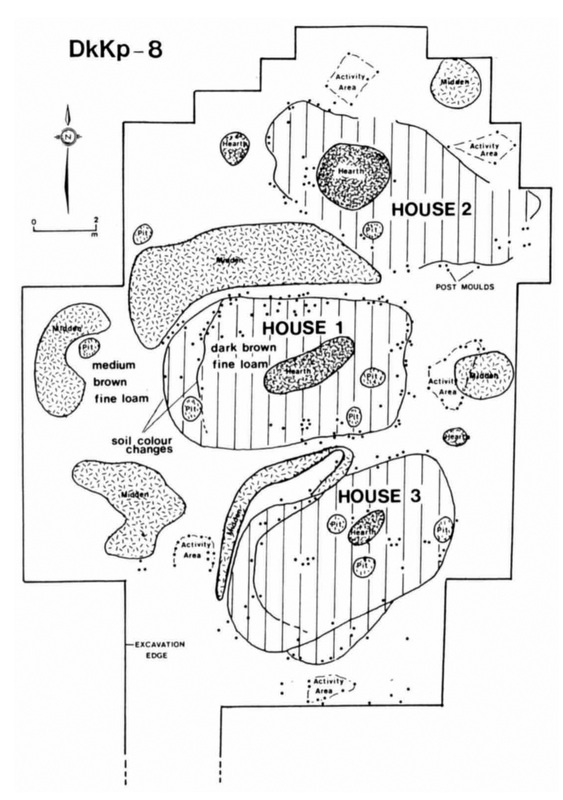| I stumbled upon a paper by Reid and Rajnovich (1991) that describes three Woodland structures from the Ballynacree site in the Kenora District of western Ontario. The structures are about 8m x 4m, defined by both postmolds and contrasts between interior and exterior sediments. At the time the paper was written, the three structures from the site constituted the majority of known, excavated Laurel houses. I do not know if that is still the case. Three radiocarbon determinations suggest that House 1 dates to about AD 1250. This is, of course, a relatively late age for something that is called "Middle Woodland." These houses, like others that strain the Midwest/Southeast-centered cultural-historical framework that I'm currently using, are encouraging me to rethink the organization of the database. Since the relationships between our temporal and cultural chronologies are not consistent across the eastern woodlands, it may be a good move to separate them in the organization of the database. I'm considering simply dividing "time" into discrete blocks (say 200, 500, or 1000 years in duration) and then several columns to categorize the cultural-historical placement of the site (e.g., Archaic - Late Archaic - Brewerton). This would allow one to plot groups of contemporaneous structures within thicker or thinner slices of time. Something to think about. | Above: Figure 3 from Reid and Rajnovich 1991:196. The caption is "The Ballynacree site excavations revealed three houses with their associated features--a complete Laurel village. |
The Reid and Rajnovich (1991) paper contains pointers to publications with data on several Woodland and Archaic structures in the region. I've never been there, but based on its entry in Large Canadian Roadside Attractions it looks like a nice place to visit.

 RSS Feed
RSS Feed
